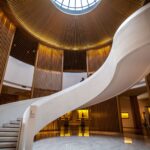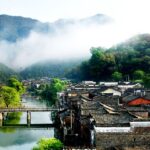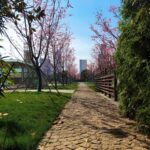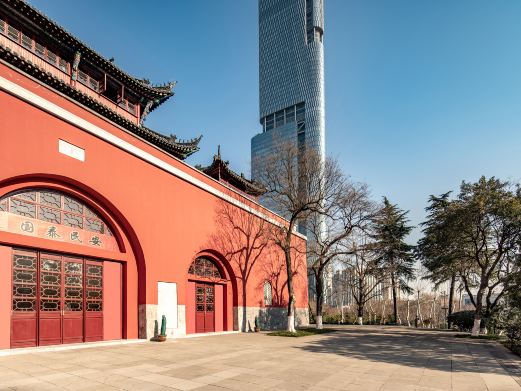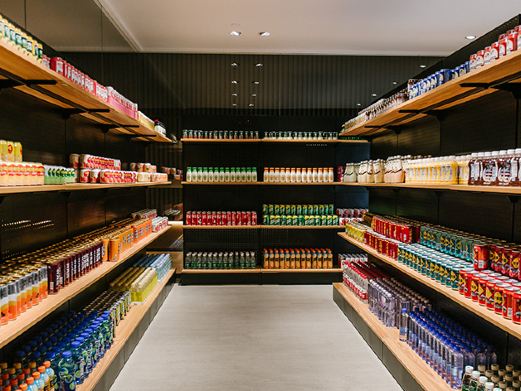The Hemudu Site Museum is located in Hemudu Town. For many people, ‘Hemudu culture’ is just a noun in history textbooks. But when you come to Yuyao, one of the birthplaces of Hemudu culture, there is no reason not to come to the museum to witness its past and present. If you travel with children, it is a good opportunity to gain knowledge. The museum consists of two parts: the exhibition hall and the on-site display of the ruins. The arch formed by three huge stones in front of the museum is the symbol here. On the beam is a picture on an ivory piece unearthed from the ruins: two giant birds spreading their wings, guarding the rising sun, full of tension. Almost all tourists who come here will take pictures here. The architectural style of the museum is also designed according to the Hemudu architectural style. The herringbone appearance and several sets of staggered components symbolize the mortise and tenon technology of Hemudu. First visit the exhibition hall. There are three exhibition halls in total. The first exhibition hall is the preface hall, which shows an overview of Hemudu culture with pictures, texts, models and cultural relics. Especially the two skull fossils and restored head portraits allow the audience to see the appearance of their distant ancestors 7,000 years ago. The second exhibition hall mainly focuses on rice farming and fishing and hunting activities. The exhibits on display include tools with typical Neolithic characteristics such as stone tools, pottery, bone needles, and bone whistles, as well as remains of agricultural fruits such as rice and wild jujubes, so that you can understand how the ancestors produced and lived back then. The display in the third exhibition hall is mainly about life and art, and displays wooden building components and various textile tools. In addition, there are many decorations made of ivory, bone, jade, pottery, etc. The craftsmanship and conceptual design level are very amazing. Tourists can perceive the daily and artistic life of the Hemudu people from here. Coming out of the exhibition hall and walking not far to the southeast is the on-site display area of the ruins. The first thing that catches the eye is the restored archaeological site. In the ground fence are a large number of densely packed wooden building components, which shows the prosperity of the Hemudu tribe. In addition, there is a rebuilt Hemudu house nearby. These ‘stilted’ buildings not only have a very artistic shape, but the mortise and tenon technology that appears in them and the design of living upstairs and raising livestock downstairs are epoch-making feats in Hemudu culture. Here, a group of sculptures creates the living atmosphere of that year. It is the more interesting and intuitive part of the entire museum. You can stroll on the street like the residents in the tribe, or you can enter the house and see women spinning and weaving, and men cutting wood and building houses. Some people grind bone tools, some pound grains and husk, some mix mud to make pottery, and some are engrossed in carving, making people seem to return to ancient times and have a sense of time travel. After the visit, you might as well take a walk by the Yaojiang River nearby. The scenery is good.
For those interested in archaeology, the Tianluoshan Site Museum, managed by the same museum and located approximately 7 kilometers to the north, is also worth a visit. You can get up close to the archaeological site. However, due to the lack of reliable public transportation, you may need to find a rickshaw or motorcycle to get there. Opening hours: May 1st to September 30th, Tuesday to Sunday, 08:30 to 17:00; All day closed on Mondays throughout the year; October 1st to April 30th, Tuesday to Sunday, 09:00 to 16:30. On New Year’s Day, Spring Festival, Qingming Festival, Labor Day, Dragon Boat Festival, Mid-Autumn Festival, and National Day, the museum is open from 09:00 to 16:30. Essential tips: 1. Chinese guided tours in the exhibition hall cost 50 yuan per session, while foreign language tours (English, Japanese) cost 80 yuan per session, with a limit of 30 people per group. 2. Photography in the exhibition hall is not allowed with tripods or flash.


